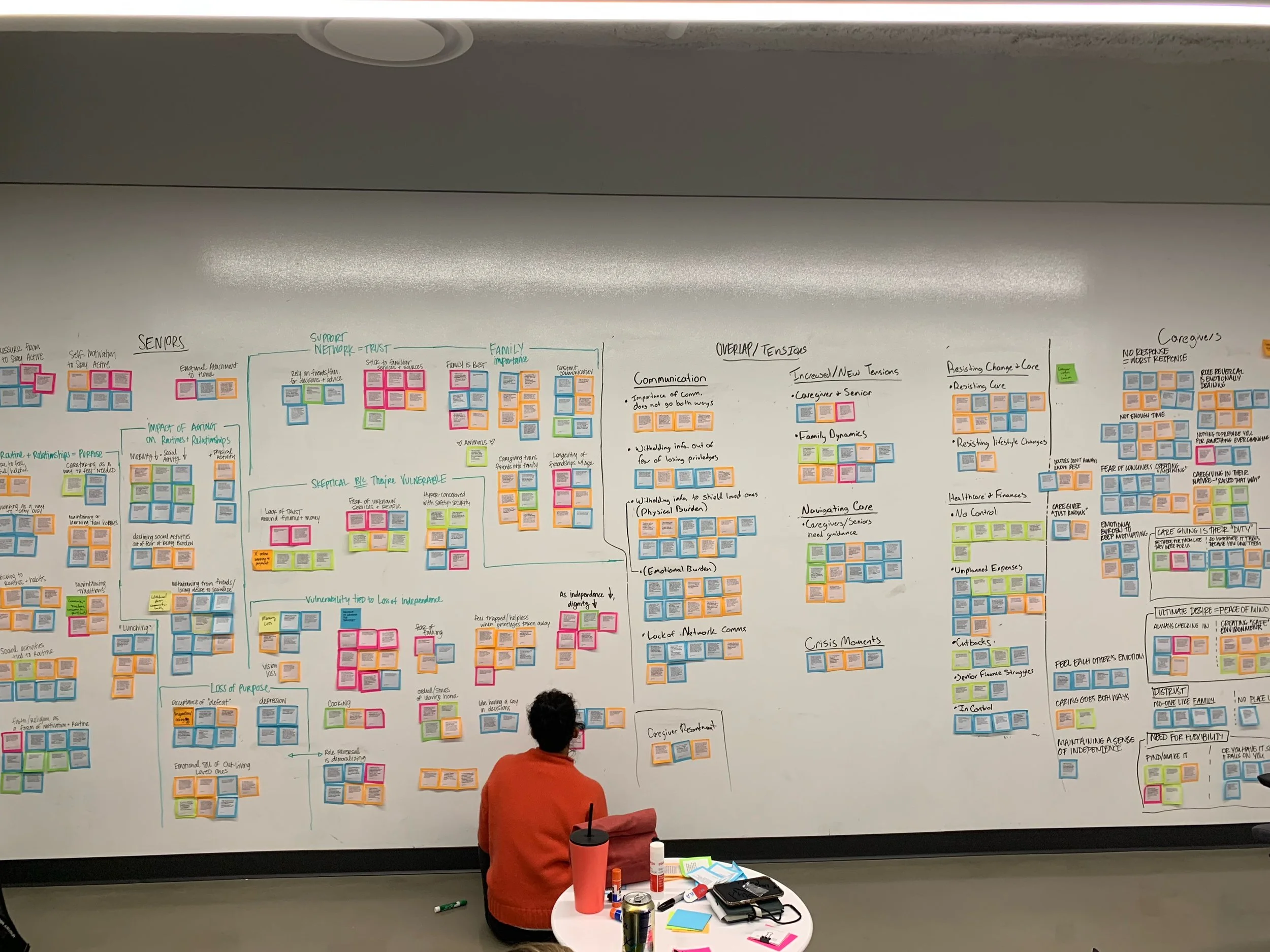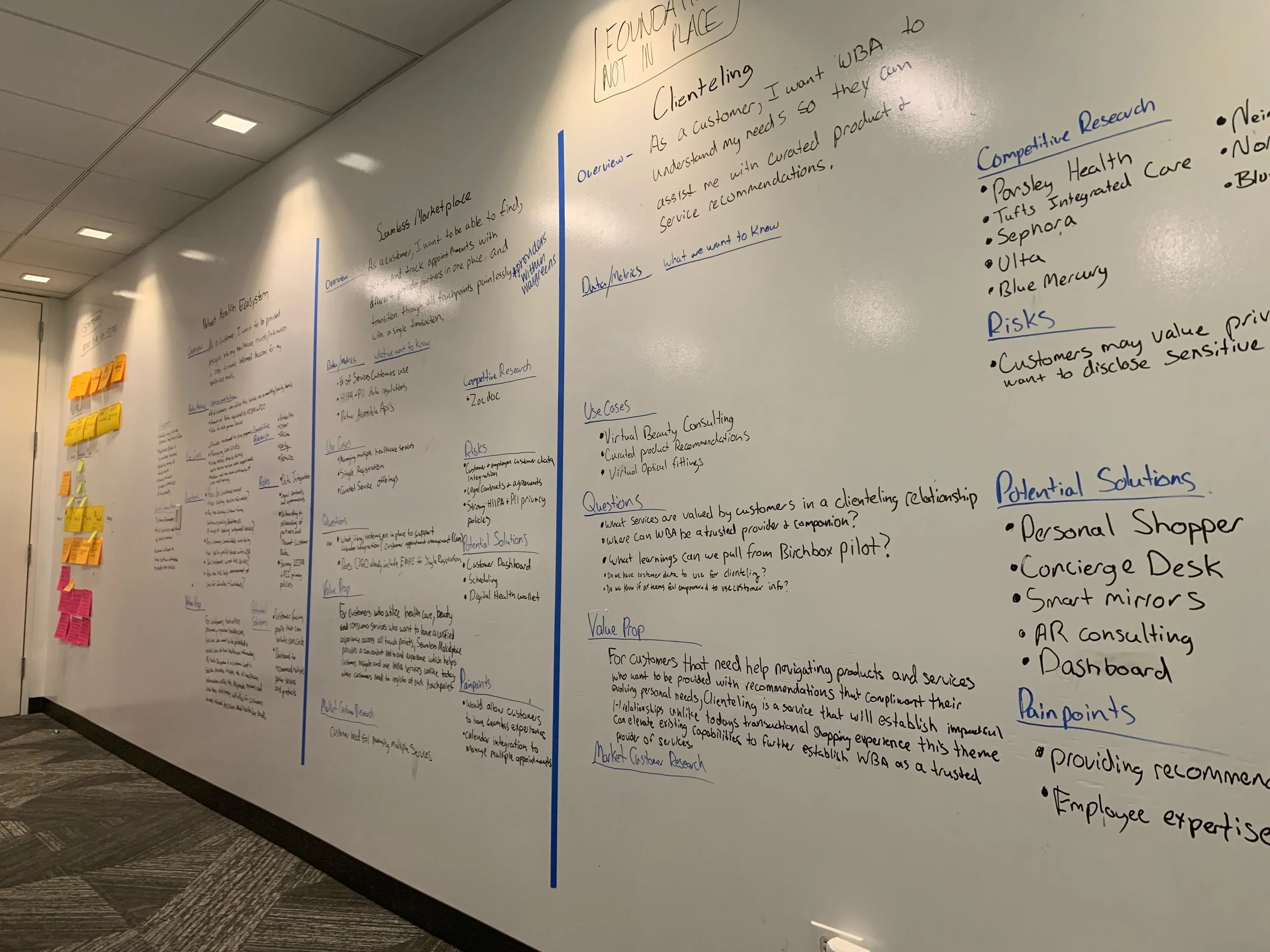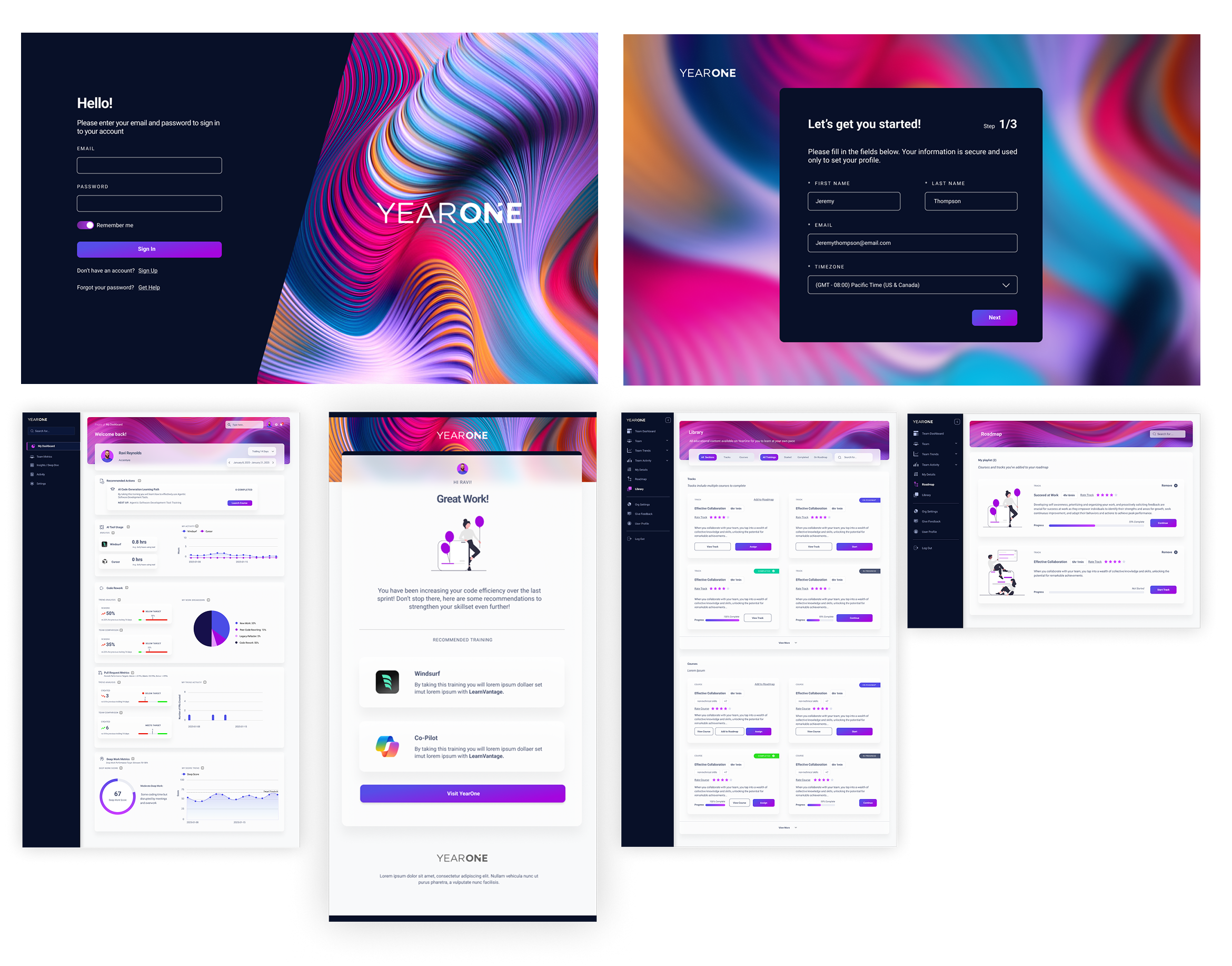Processes can vary given the problem and challenge at hand. I believe that processes should be flexible in order to adapt and effectively solve for the challenge we are given. However, every designer should have a baseline process guide for how they approach each project in order to streamline delivery and create meaningful work. The following process outlines how I approach these challenges.
01
Define/Refine the Problem
Stakeholder Interviews and design thinking workshops
One of the first things we should do in our process is define or refine the problem that was given to us. We should ask ourselves if this is the right problem that we should be solving for to insure our outcome is a thoughtful solution.
02
Conduct Research
Ethnographic Research, Mindsets, Personas
Now that we have a thoughtful problem to solve for, we conduct targeted in-depth user research to insure that this aligns with our user needs. In this we begin to synthesize this information to identify user mindsets or personas which we will use to begin developing concepts against specific needs.
03
Define and Validate Concepts
Lateral Competitive Analysis, Surveys, User Interviews, Conceptual Sketches/Illustrations
With a fail fast mentality, we can now start to quickly ideate against the user needs that we defined within our research. To insure that we develop a differentiated experience we can conduct lateral research of experiential competitors to reinforce our concepts. With these concepts, we can begin to get initial user validation to insure we are meeting their needs.
04
Make to Learn
Interactive and Visual Prototypes, Concept Design, User Testing
Once we have validated our concepts, we begin conducting sessions to start to visualize how these concepts are going to come to life. Once we have a solid direction, we can begin to do various brand explorations through things such as moodboarding which we will use to inform prototype designs. With these prototypes, we then conduct user testing to evaluate how users interact with our product or service.
05
Refine and Scale
Detailed Screen Designs, Design Systems, Dev Ops
Taking our insights from user testing, we refine our solution and in turn begin scaling our product through detailed screen designs and systems that can easily be understood by Dev Op teams to insure our designs are implemented the way they were intended and meet our user needs.
06
Sustain
Onboard and enable key stakeholders
One thing that I feel like often gets overlooked is sustaining your solution. By developing mindsets, we have learned that user needs change overtime and it is important that your product or service has the ability to evolve. By regularly revisiting your solution, evaluating current trends, and user needs we can insure that our solution adapts with our users.





